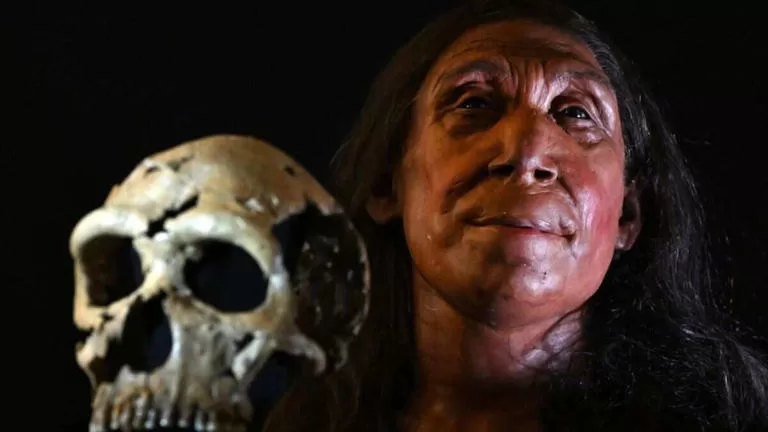Unveiling the Face of a 75,0000 Year Old Neanderthal Woman

In a groundbreaking effort, scientists have reconstructed the visage of a Neanderthal woman, offering a glimpse into the past and shedding light on our evolutionary relatives who roamed the Earth some 75,000 years ago.
The remarkable feat was achieved using the fragmented remains of a skull, discovered in Shanidar Cave in Iraqi Kurdistan. The skull, found amidst the iconic setting where numerous Neanderthal remains were unearthed in the 1950s, presented a unique challenge due to its fragile state. The bones, described as having the consistency of “a well-dunked biscuit,” had to be meticulously strengthened and reassembled before the reconstruction could begin.
Led by expert palaeoartists and featured in the new BBC Studios documentary “Secrets of the Neanderthals” on Netflix, the reconstruction offers a glimpse into the life of our ancient ancestors. Dr. Emma Pomeroy, a palaeoanthropologist from the University of Cambridge involved in the project, expressed the significance of the endeavor, stating, “I think she can help us connect with who they were.”
The painstaking process of reconstructing the skull involved bringing the fragile fragments to the UK, where they were meticulously freed from sediment blocks and pieced together like a complex jigsaw puzzle. The resulting 3D model served as the basis for the lifelike sculpture created by Dutch artists Adrie and AlfonsKennis, renowned for their anatomically faithful representations of ancient humans.
While the sculpture offers a striking portrayal of the Neanderthal woman, the true value lies in the original skeleton. Researchers believe the individual, affectionately dubbed “Shanidar Z,” was a female based on genetic markers and skeletal characteristics. Analysis suggests she likely lived into her mid-40s, facing challenges such as poor dental health in her later years.
The discoveries at Shanidar Cave have challenged previous notions of Neanderthals as primitive beings, revealing evidence of sophisticated behaviors and rituals. The cave’s intriguing burial practices, with bodies carefully placed in a gully next to a tall rock pillar, suggest a level of reverence and care for the deceased.
While some have speculated about the presence of flowers at the burial site, the British team involved in the excavation offers a more pragmatic interpretation. They suggest that the pollen found throughout the skeletons may have been deposited by burrowing bees or flowering branches placed atop the bodies to deter scavengers.
Professor Chris Hunt of Liverpool John Moores University emphasizes the importance of recognizing these practices as a form of “placement” rather than traditional burial rites. He suggests that Neanderthals maintained a cultural tradition of honoring their dead, albeit in a manner distinct from modern human rituals.
As the reconstruction of Shanidar Z’s face offers a poignant glimpse into the past, it also serves as a reminder of our shared ancestry with Neanderthals. Through meticulous scientific inquiry and artistic interpretation, we continue to unravel the mysteries of our evolutionary history, forging connections across millennia.






